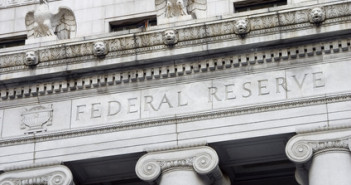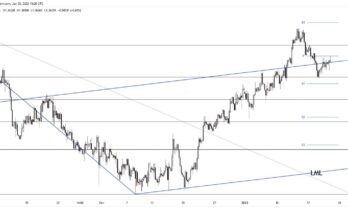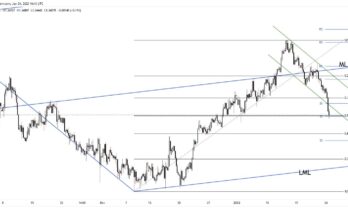There has been little in the way of reprieve from volatility in financial markets recently, with the oil rout incentivizing a fresh wave of risk aversion that has sent global equities into retreat this morning. In an effort to curb the exodus of capital induced by crumbling oil prices, the Russian Central Bank stepped into action last night and hiked interest rates from 10.5% to 17%, hoping the 650bps increase would limit the recent surge in Rouble devaluation and inflation risks. The emergency rate hike helped to stabilize USDRUB briefly as the pair slid back to the 59 handle; however, the monetary policy tightening measure was not enough to curb speculators from establishing new short positions in the Rouble, along with a swell of corporate demand to buy USD to fund foreign denominated debt as corporations worry the central bank is losing its grip on the market. Volatility in USDRUB has been enormous this morning, with the pair reversing its earlier losses and printing fresh record highs just below the 80 handle, but at the time of writing has seen some consolidation and is pivoting around the 73 level.
The Shanghai Comp was able to buck the trend of sagging global equity performance and increased by 2.3% on its session, with risk appetite bolstered by a softer than expected HSBC Manufacturing PMI which supports market expectations there will further monetary accommodation from the People’s Bank of China. The headline reading fell from 50.0 to 49.5, signaling purchasing manager activity in the manufacturing sector contracted from the previous month, and combined with last week’s disappointing data increases the likelihood there will be new measures introduced in order to grease the monetary policy wheels to save annual GDP growth from falling below the government’s preferred levels. As a result, the Aussie and Loonie have enjoyed a slight reprieve from oil taking another leg lower, with the export-linked currencies garnering attention from participants on expectations of a pick-up in activity from China.
The news flow out of Europe has been positive across the board this morning, a statement that hasn’t been issues relatively frequently in the past few months. The flash PMI readings for the month of December showed that activity in both the service and manufacturing sectors across the Eurozone accelerated from the previous month, beating estimates after German manufacturing PMI buoyed the composite reading for the zone. In combination with the slightly cheery purchasing manager numbers, the survey on investor confidence in Germany that is conducted by the ZEW institute blew expectations out of the water, with the headline printing at 34.9 in December, up from the 11.5 registered in November. The positive economic docket along with continued anecdotal reports that the majority of the ECB governing body is still a ways away from agreeing on a coordinated QE program has lifted the Euro against the greenback this morning, with EURUSD punching through the 1.25 handle.
As we head into the North American open, the early morning slide in oil with WTI tumbling below $54/barrel induced flow into US treasuries, with the downward pressure on yields dragging the DXY lower and as a result sent USDJPY into a tailspin as the pair broke the 116 handle to the downside. There has since been a slight recovery as equity futures come off their lows after building permits and housing starts for December came in slightly weaker than anticipated, though the resulting rebound has only pushed USDJPY back into the mid-116s. The Loonie is on slightly stronger footing against the USD before the opening bell, managing to ease USDCAD back from another run at 1.17 as Chinese stimulus hopes and consolidative price action in the DXY provides support for the commodity-linked currency.  On the economic front Canada’s domestic data came in mixed this morning with manufacturing sales sliding by more than expected October, though demand for Canadian securities from foreigners picked up over the same month. USDCAD continues to be a buy on dips as the hydrocarbon complex struggles to find a base, though it is likely volatility will be elevated ahead of tomorrow’s monetary policy statement from the Federal Reserve. With the labour market continuing to develop in a constructive manner, market participants will be keenly eyeing the language in the statement for the key phrases of whether slack in the labour market is still significant, and if ‘considerable’ is still apt to characterize the time after asset purchases have end to when interest rates will rise. The recent liquidation in oil and the impending lower prices at the pump are likely to also have an effect on the Fed’s updated inflation projections, so there will be lots of moving pieces that could potentially generate volatility over the course of the next few days.
Further reading:
Ukraine: things could get worse before they get better [Video]
housing starts



